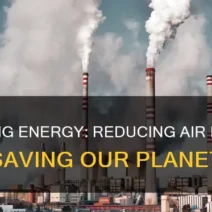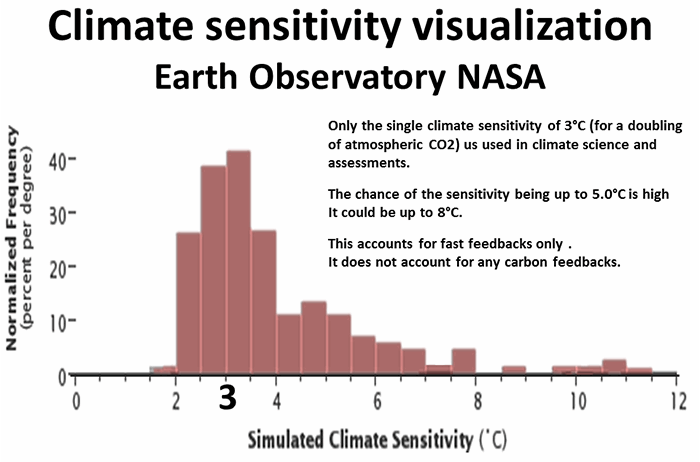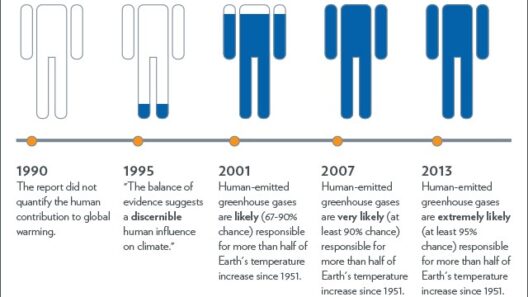Climate sensitivity refers to the degree to which Earth’s surface temperature responds to changes in atmospheric carbon dioxide concentrations. It is a critical concept for understanding climate change, as it helps predict future warming in response to anthropogenic emissions of greenhouse gases. At its core, climate sensitivity illustrates an intrinsic property of Earth’s climate system. However, the nuances behind this seemingly simple metric harbor a complexity that fascinates scientists and environmentalists alike. This article delves into the multifaceted nature of climate sensitivity, elucidating its implications and the underlying mechanisms governing temperature response.
Fundamentally, climate sensitivity is defined quantitatively as the change in global mean temperature that can be expected from a doubling of atmospheric carbon dioxide concentrations relative to pre-industrial levels. Researchers use a standard measure known as “equilibrium climate sensitivity” (ECS), which represents the long-term response after the climate system has reached a new equilibrium. The estimated range of ECS typically falls between 1.5°C and 4.5°C, yet this range remains an area of debate, underscoring the uncertainties inherent in climate modeling.
One of the common observations regarding climate sensitivity is its correlation with feedback mechanisms within the climate system. Feedbacks are processes that can amplify or dampen the effects of an initial warming. For example, as temperatures rise, ice sheets and glaciers, which reflect sunlight, begin to melt. This reduction in reflective surfaces leads to more absorption of solar energy, further escalating warming—a positive feedback loop. Conversely, increased cloud cover can reflect sunlight away from the Earth, potentially mitigating temperature rise—a negative feedback. Such processes complicate predictions and add layers of intrigue to the study of climate sensitivity.
Understanding the temperature response of Earth involves dissecting various components of the climate system: the atmosphere, oceans, cryosphere, and biosphere. The atmosphere is the first line of defense, containing greenhouse gases like carbon dioxide and methane. These gases trap heat, enhancing the greenhouse effect. As concentrations of these gases rise, the atmosphere becomes more effective at retaining heat, which should, in theory, increase climate sensitivity.
The oceans absorb a significant portion of the excess heat generated by greenhouse gas emissions. This heat uptake plays a crucial role in regulating temperature responsiveness. While the oceans have the capacity to moderate atmospheric temperatures in the short term, their long-term role can complicate the understanding of climate sensitivity further. The ocean’s thermal inertia means it can take decades to centuries for changes in temperature to equilibrate fully, often leading to a lag in surface temperature responses and complicating predictive modeling.
Additionally, the cryosphere, encompassing glaciers, ice caps, and sea ice, profoundly impacts climate sensitivity. The cryosphere acts as a climate regulator, with changes in its extent influencing albedo, the measure of reflectiveness of Earth’s surface. As ice melts, darker ocean water or land replaces it, leading to more heat absorption and increased warming—again illustrating the positive feedback mechanism. This interaction is particularly evident in polar regions, where warming is significantly pronounced.
The role of terrestrial ecosystems—forests, grasslands, and wetlands—should also be recognized in conversations about climate sensitivity. Vegetation can absorb carbon dioxide and influence local and global climate systems. Deforestation and land-use changes can thus alter climate sensitivity through feedback loops, releasing stored carbon and changing surface albedo. Ecosystems can also adapt to temperature changes, affecting their ability to sequester carbon and further complicating the dynamics of climate sensitivity.
The challenge in determining climate sensitivity lies in both natural variability and future potential scenarios. The Earth’s climate has evolved through various epochs, affected by factors like solar radiation, volcanic activity, and human-induced changes. Each of these factors adds layers of complexity. Furthermore, scenarios concerning future greenhouse gas emissions vary widely, depending on mitigation efforts, technological advancements, and social dynamics. This variability contributes to the inherent uncertainties surrounding projections of climate sensitivity.
Furthermore, the importance of understanding climate sensitivity transcends academic study; it has significant implications for policymaking and environmental strategy. Policymakers rely on climate sensitivity estimates to formulate strategies aimed at limiting global warming to manageable levels, such as the Paris Agreement’s target of keeping temperature increases well below 2°C. Grasping the intricate dance of climate sensitivity informs decisions that can lead to impactful changes in energy policy, conservation efforts, and public awareness initiatives.
As we navigate the complexities of climate change, cultivating a comprehensive understanding of climate sensitivity becomes paramount. It serves not merely as a scientific metric but as a lens through which we can perceive the profound implications of our actions. Each degree of warming triggered by our greenhouse gas emissions can have catastrophic consequences, from sea-level rise to extreme weather events, thereby reinforcing the imperative for proactive environmental stewardship.
In conclusion, climate sensitivity is a vital concept that encapsulates the Earth’s temperature response to escalating greenhouse gas concentrations. The interplay between various climate system components—atmosphere, oceans, cryosphere, and biosphere—creates a nuanced tapestry that influences not only our atmospheric conditions but our very existence. As the scientific community continues to unravel the intricacies of climate sensitivity, the message remains unequivocal: understanding and addressing climate change is an urgent necessity that demands our utmost attention and action.







